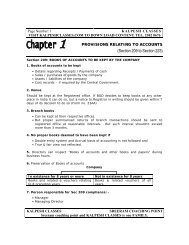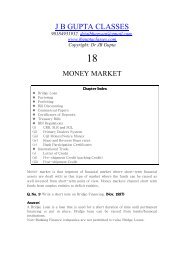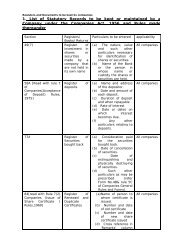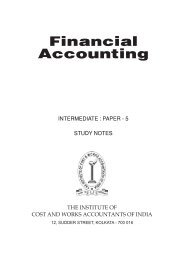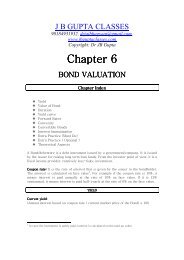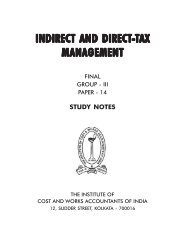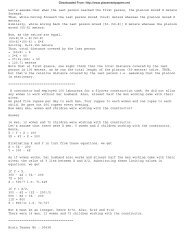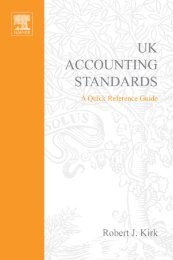Valuation for Financial Reporting - CMA Ankur Pandey
Valuation for Financial Reporting - CMA Ankur Pandey
Valuation for Financial Reporting - CMA Ankur Pandey
- No tags were found...
Create successful ePaper yourself
Turn your PDF publications into a flip-book with our unique Google optimized e-Paper software.
6 <strong>Valuation</strong> <strong>for</strong> <strong>Financial</strong> <strong>Reporting</strong>valuation practitioners need a thorough understanding of the relevant accountingliterature.<strong>Valuation</strong> specialists who enter this service line must be willing to work in anaccounting environment, which presents challenges above and beyond those found inthe theoretical valuation world. They must understand and use accounting standardsand best practices that apply to fair value measurements, be able to work with auditors,and stay current with the relevant accounting literature.STATEMENT OF FINANCIAL ACCOUNTING STANDARDSNO. 157, FAIR VALUE MEASUREMENTSThe FASB is the U.S. accounting standard setter <strong>for</strong> anyone reporting under GAAP. It isthe standard setter because the U.S. Securities and Exchange Commission effectivelyrecognizes the FASB <strong>for</strong> establishing GAAP applicable to publicly registered companies(subject to additional SEC requirements). There<strong>for</strong>e, the fair value accountingliterature issued by the FASB is effectively a regulatory accounting standard.The FASB continues to move ahead with an agenda that includes fair valueaccounting. In 2006 it issued Statement of <strong>Financial</strong> Accounting Standards No. 157,Fair Value Measurements to take affect <strong>for</strong> financial statements issued <strong>for</strong> fiscal yearsbeginning after November 15, 2007 and interim periods within those fiscal years.SCOPESFAS No. 157 establishes a framework <strong>for</strong> making fair value measurements andrequires additional disclosures about the measurements. The pronouncement does notestablish any new areas in financial reporting where fair value accounting is required.Rather, it interacts with other accounting literature that requires or permits fair valuemeasurements—with some exceptions (paragraph 2). Appendix D of SFAS No. 157lists accounting pronouncements within the scope of the standard as of the issuancedate. It amends 28 Opinions, Statements, Interpretations, and other official pronouncementspreviously issued by accounting standard setters and applies to another39 pieces of accounting literature. Appendix 1.1 to this chapter lists the pronouncementsimpacted by SFAS No. 157. Appendix 1.2 lists the literature specificallyexcluded from application of SFAS No. 157.FAIR VALUESFAS No. 157 provides a single authoritative definition of fair value <strong>for</strong> financialreporting. It defines fair value as:Fair value is the price that would be received to sell an asset or paid to transfer a liabilityin an orderly transaction between market participants at the measurement date. 7Fair value <strong>for</strong> financial reporting is one of five standards of value in the businessvaluation body of knowledge. The others are fair market value, investment value,intrinsic value, and fair value (under state statutes) in dissenting shareholder matters.



